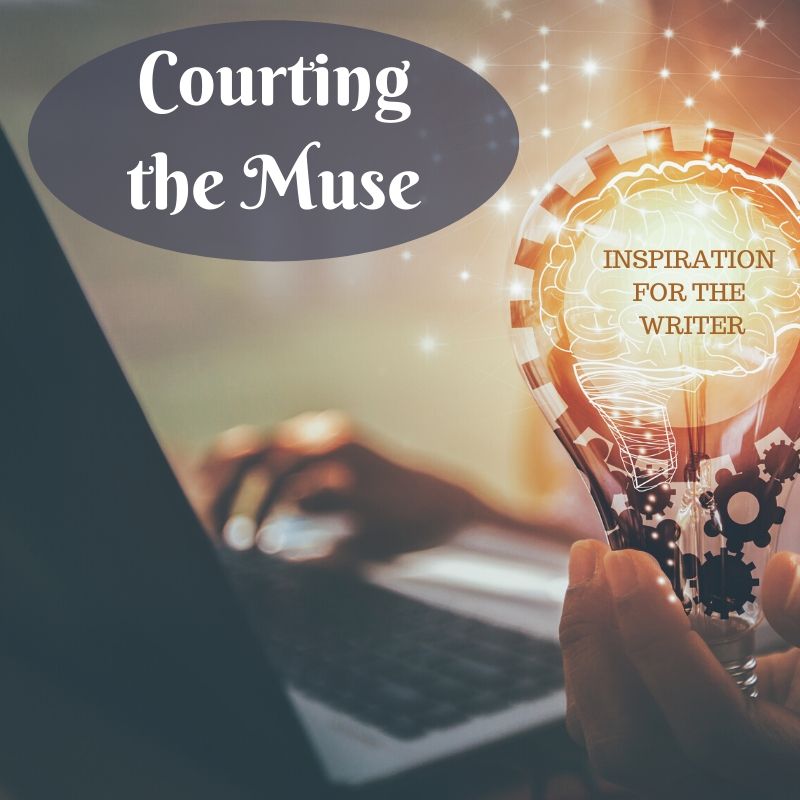As writers, we’re generally in the business of creating our own inspiration. When it does strike us unbidden, we know it’s a rare gift that can’t be squandered.
The problem is, even when our muses turn suddenly, spontaneously generous, they rarely shower us with all the inspiration we need to produce a complete work. Some fragment of a story might flare lightning across our minds — a striking premise or a single, unforgettable scene. But in that same Eureka moment, we don’t always get the setting, the conflict, or the characters we need to turn that inner prompt into a rich and powerful story.
If you’re in need of characters to anchor a compelling concept and give it a human touch, you can always opt for the stereotypical solution — writing what you know and transforming all your friends and loved ones into thinly veiled fiction. But if you want a wider, wilder range of characters to play with, why not turn to historical figures?
As a PhD student in history, I got into the discipline for the characters I encountered in textbooks. There was the mystic who wept her way through the Holy Land, disturbing her fellow pilgrims. The historian who chose castration over death, so he could finish the work his father started. The emperor who turned rulership into theater, demanding his subjects applaud him when he sang.
Any of these real-life figures would add depth and color to a novel or short story — whether or not it’s set in their native time and place. In my opinion, writers who don’t specialize in historical fiction can steal characters from history to tremendous effect. They’re not beholden to the strictures of fact, and they can even mix and match — welding, for instance, a famous painter’s precocious childhood to a rakish scientist’s turbulent marriage. Think of this as an act of narrative collage: piecing together, from a rich store of existing materials, the perfect character for your narrative needs.
Some of my favorite, non-historical novels have leaned on characters inspired by history — plucked from our past and transported to new worlds of the author’s creation. Ken Liu’s Nebula-nominated fantasy novel The Grace of Kings, for instance, rewrites material I studied extensively in grad school: an early Chinese historical account of the turbulent transition between the Qin and Han dynasties. (The author of the source text? The castrato-historian I mentioned earlier!)
In Liu’s vivid, imaginative retelling, Liu Bang — the brash and charismatic man who would become the first Han emperor — becomes Kuni Garu. He’s a hard-drinking, fast-talking charmer who shares the historical Liu’s contradictions: beneath each man’s loutish, workaday exterior lurks the potential for majesty.
As my example suggests, historically inspired character development works especially well for speculative fiction — we’ve seen plenty of sci-fi novels in recent years with settings modeled on, say, imperial Rome or the Byzantine Empire. Still, this technique should work just as well for other genres. Can you imagine a contemporary novel that transposes Virginia Woolf onto the world of digital media? Or a mystery series where the sleuth is based on Tanaquil LeClercq, the ballerina whose stage career was cut short by polio — and who reinvented herself as a dance teacher, demonstrating combinations with her arms and hands?
In the end, the figures you’ll encounter in history are more than lists of dates. They were human beings, with formative influences and inner conflicts, immortal longings and deferred dreams. Let them into the world of your story, and they just might surprise you with what they do.

Lucia Tang is a writer for Reedsy, a marketplace that connects self-publishing authors with the book industry’s best editors, designers, and marketers. To work on the site’s free historical character name generators, she draws on her knowledge of Chinese, Latin, and Old Irish — learned as a PhD candidate in history at UC Berkeley. You can read more of her work on the Reedsy Discovery blog, or follow her on Twitter at @lqtang.





No Comments